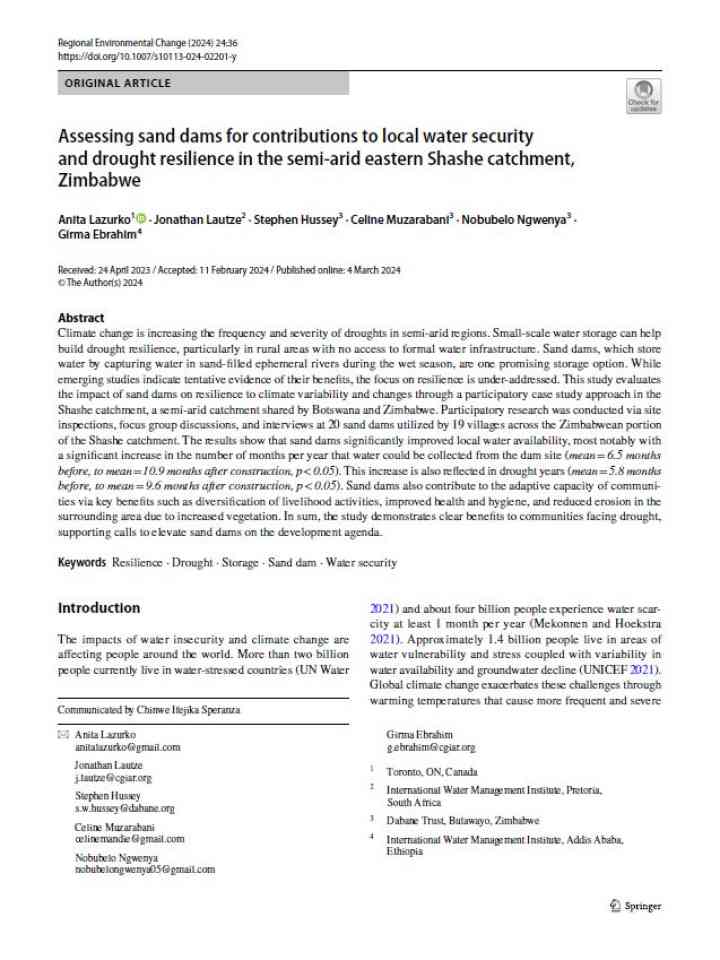Assessing sand dams for contributions to local water security and drought resilience in the semi-arid eastern Shashe catchment, Zimbabwe
This study evaluates the impact of sand dams on resilience to climate variability and changes through a participatory case study approach in the Shashe catchment, a semi-arid catchment shared by Botswana and Zimbabwe. Climate change is increasing the frequency and severity of droughts in semi-arid regions. Small-scale water storage can help build drought resilience, particularly in rural areas with no access to formal water infrastructure. Sand dams, which store water by capturing water in sand-filled ephemeral rivers during the wet season, are one promising storage option. While emerging studies indicate tentative evidence of their benefits, the focus on resilience is under-addressed.
Participatory research was conducted via site inspections, focus group discussions, and interviews at 20 sand dams utilized by 19 villages across the Zimbabwean portion of the Shashe catchment. The results show that sand dams significantly improved local water availability, most notably with a significant increase in the number of months per year that water could be collected from the dam site. This increase is also reflected in drought years. Sand dams also contribute to the adaptive capacity of communities via key benefits such as diversification of livelihood activities, improved health and hygiene, and reduced erosion in the surrounding area due to increased vegetation. In sum, the study demonstrates clear benefits to communities facing drought, supporting calls to elevate sand dams on the development agenda.
Explore further

